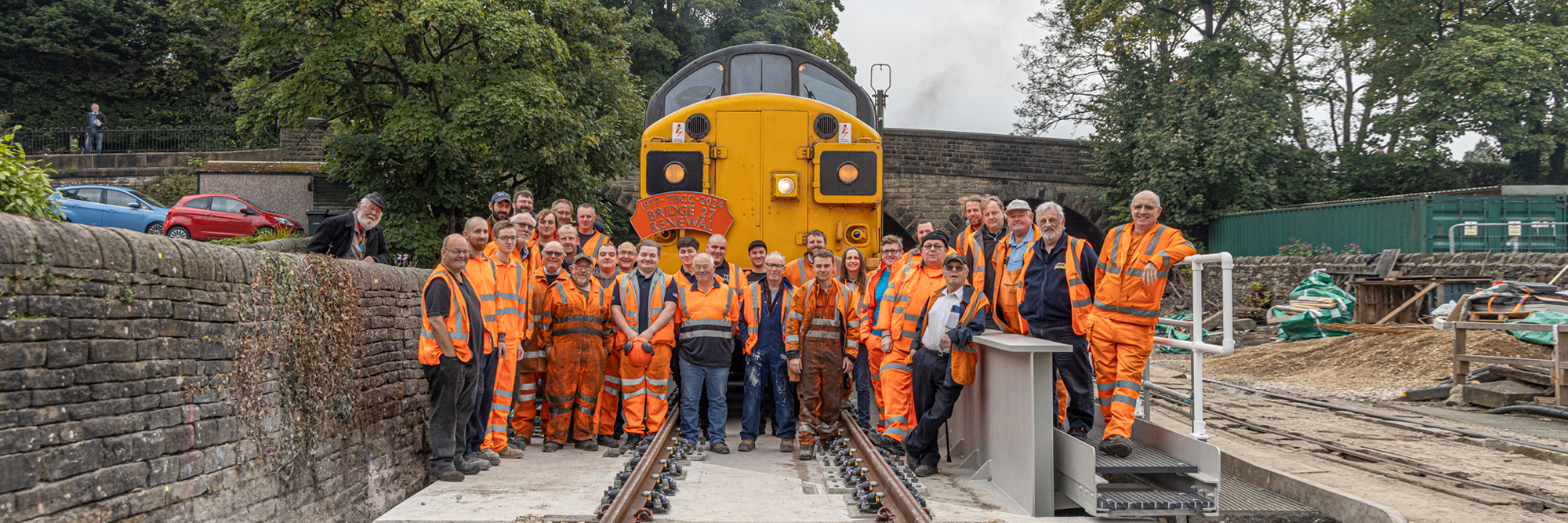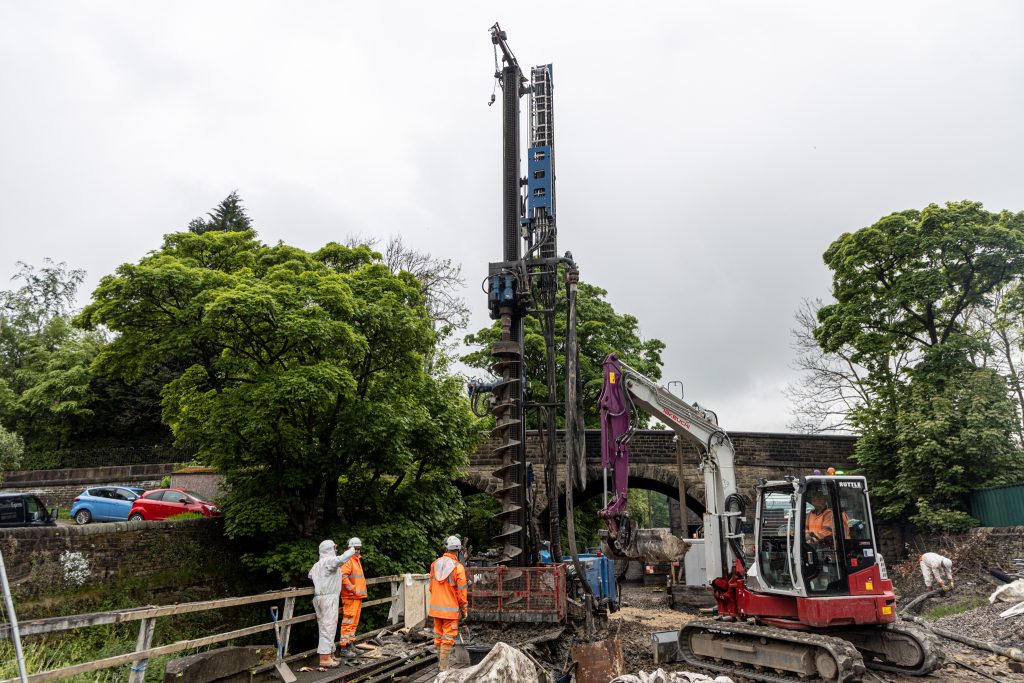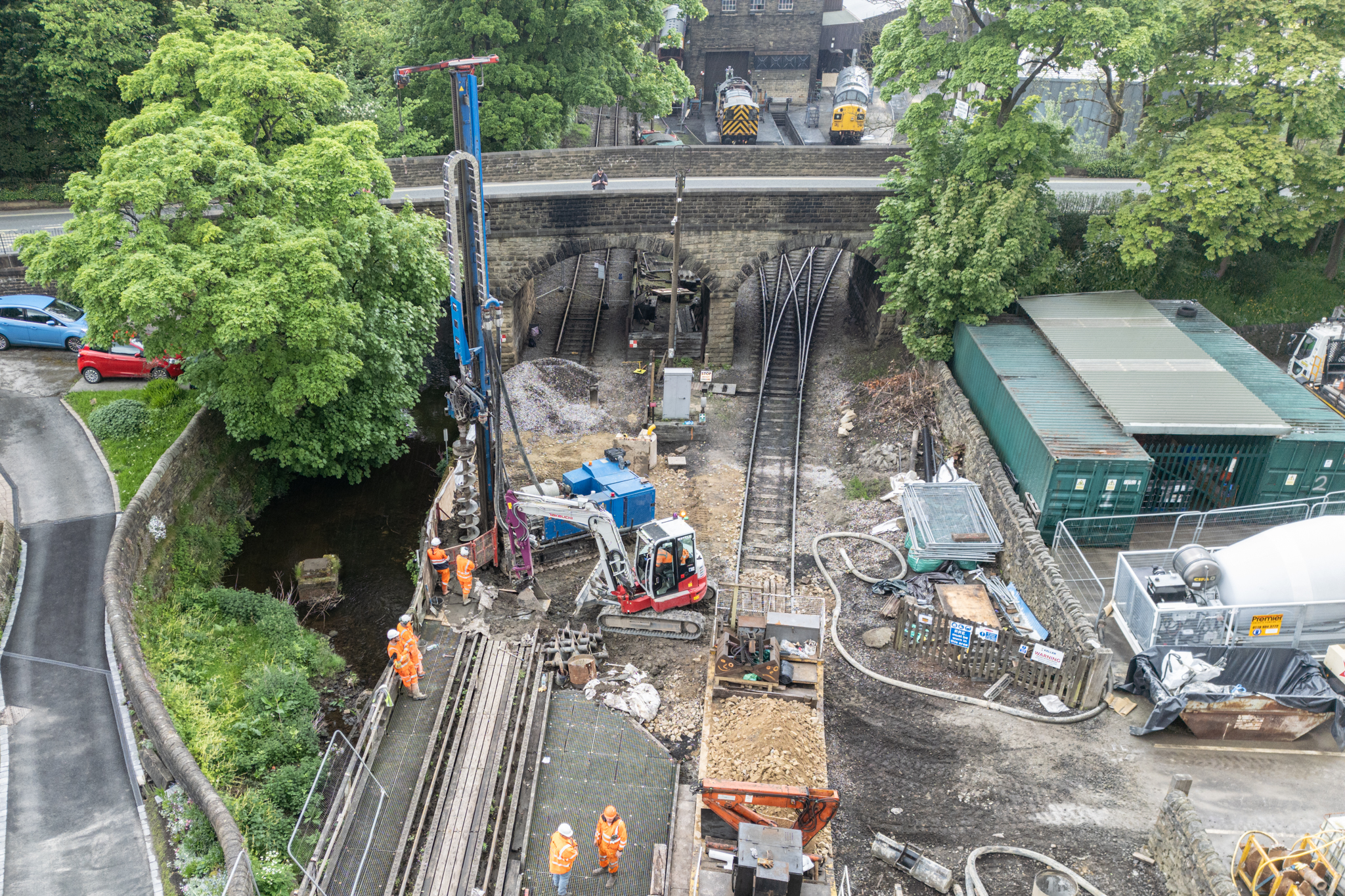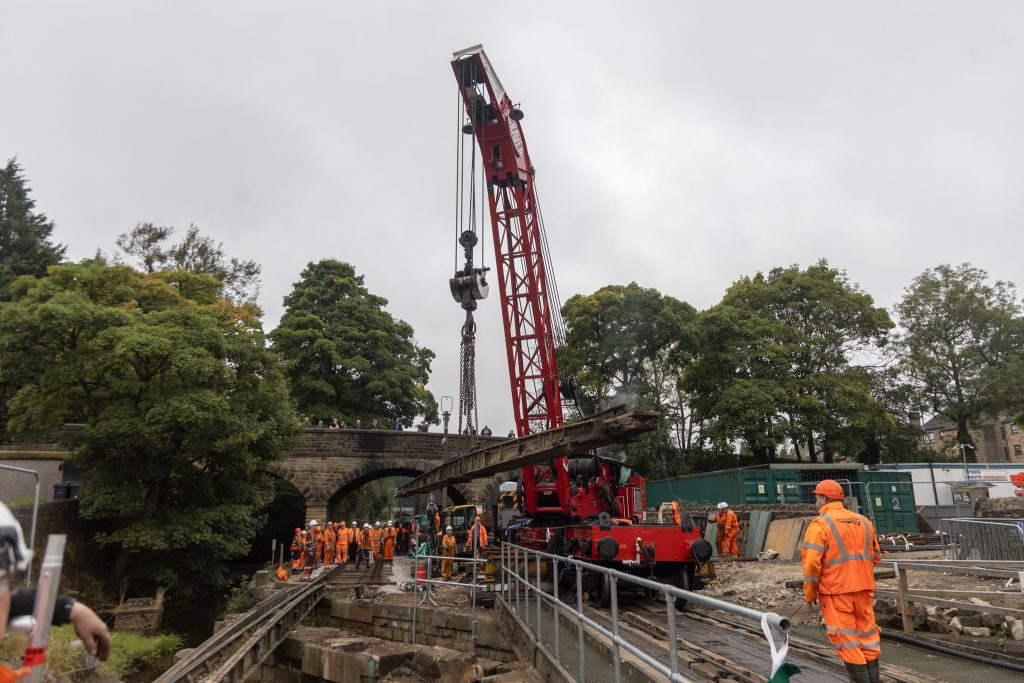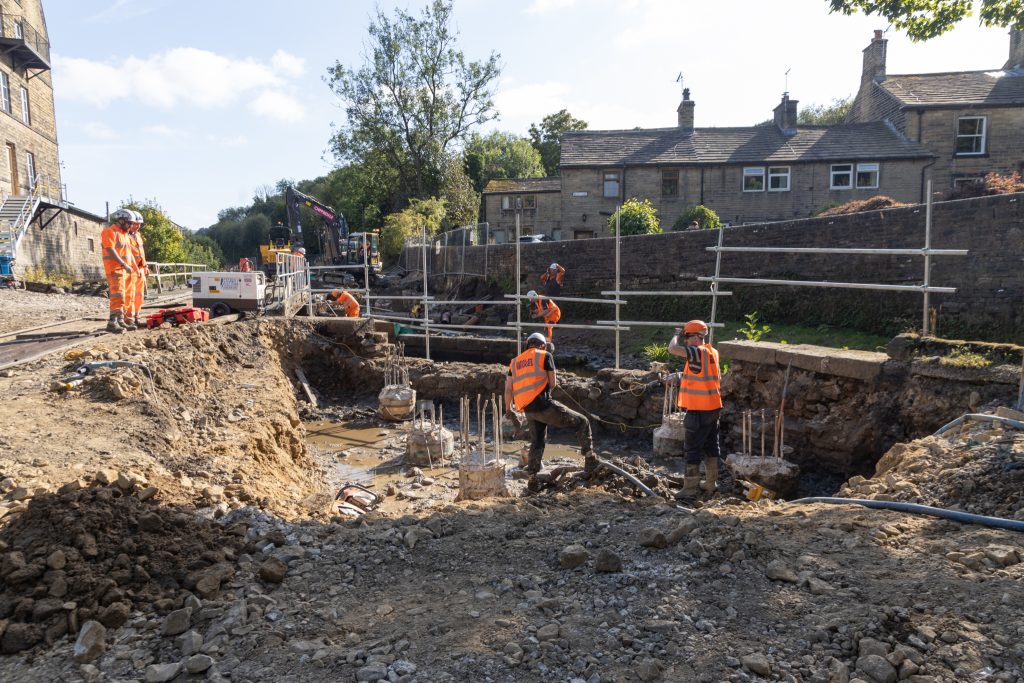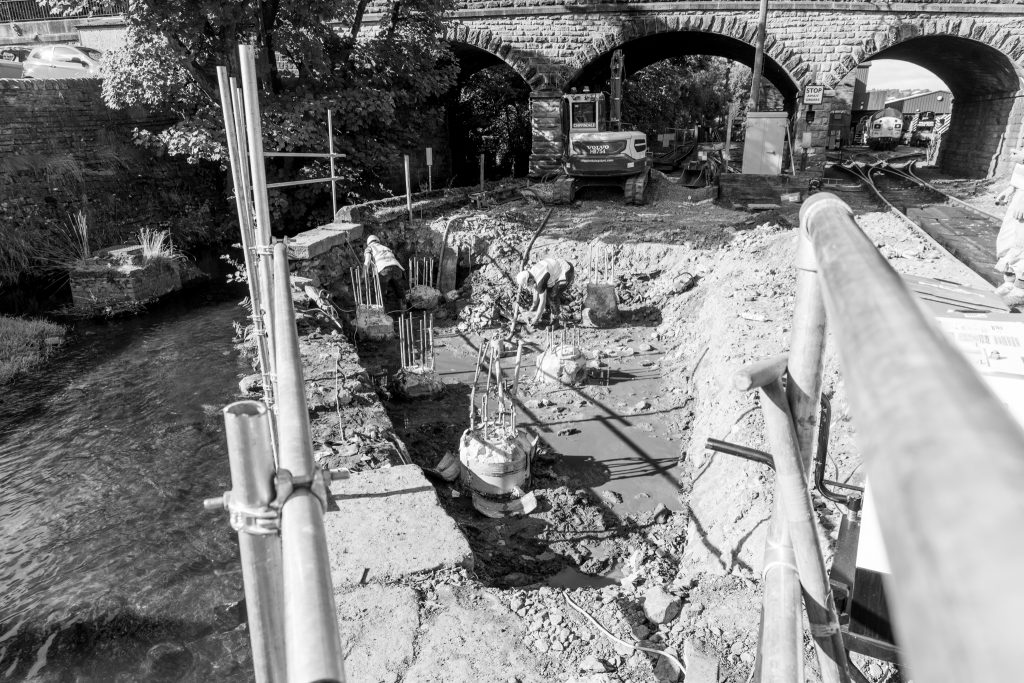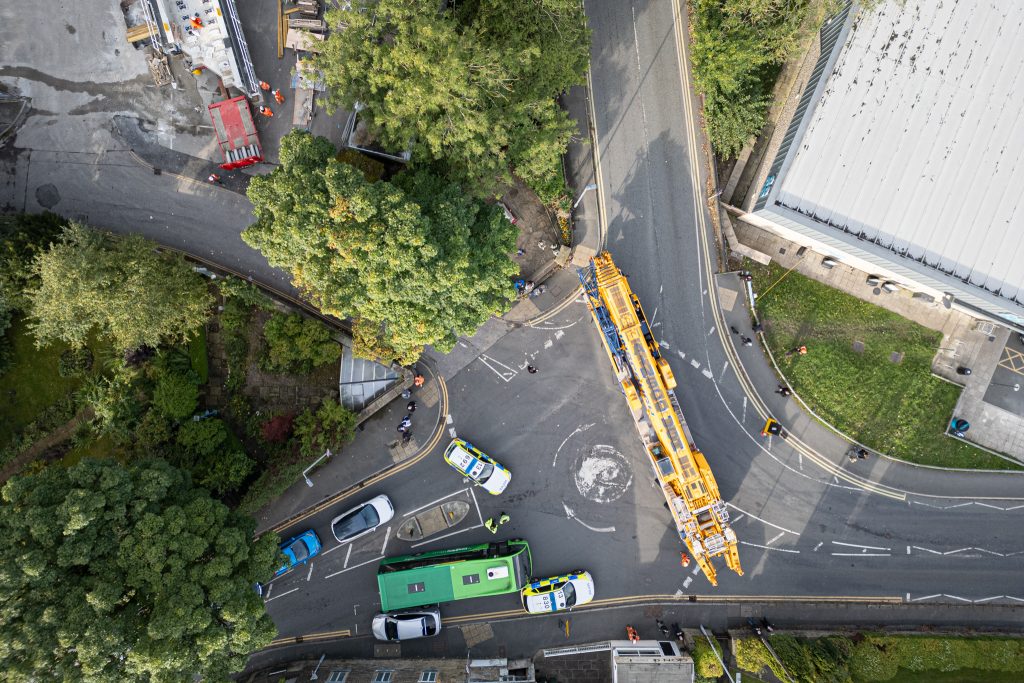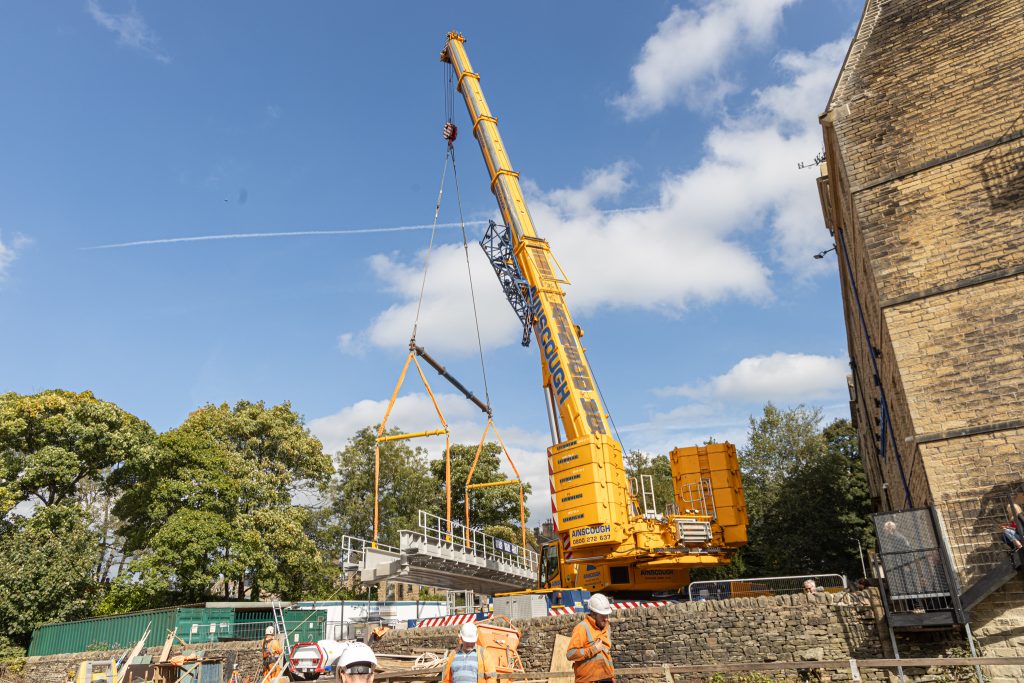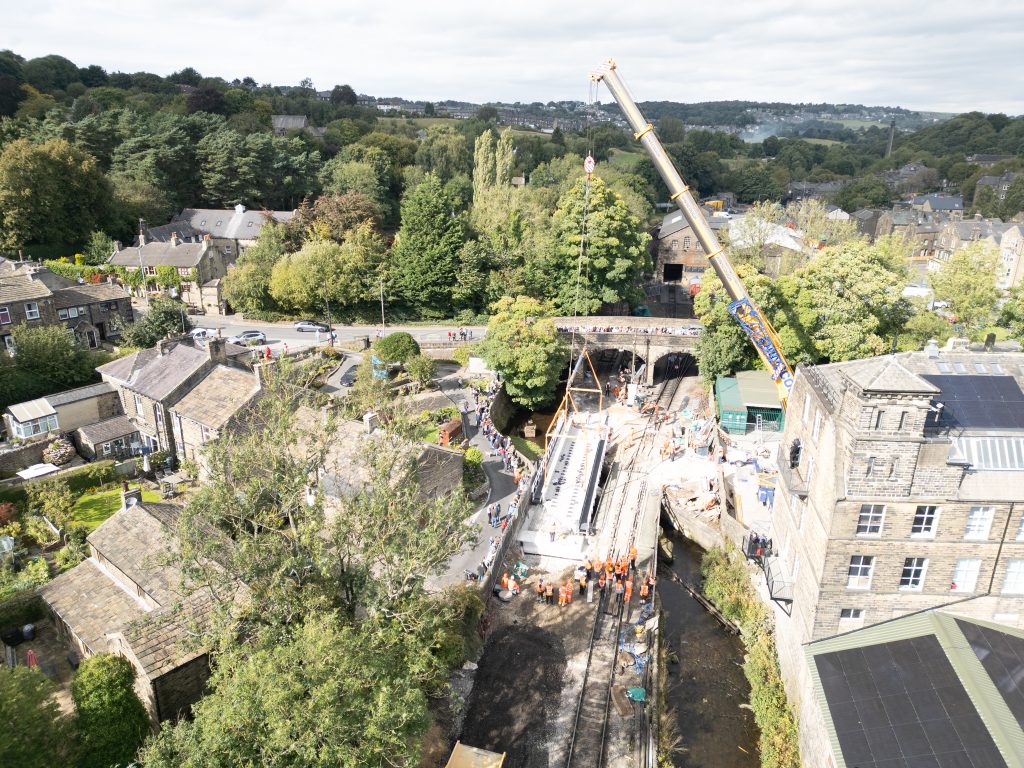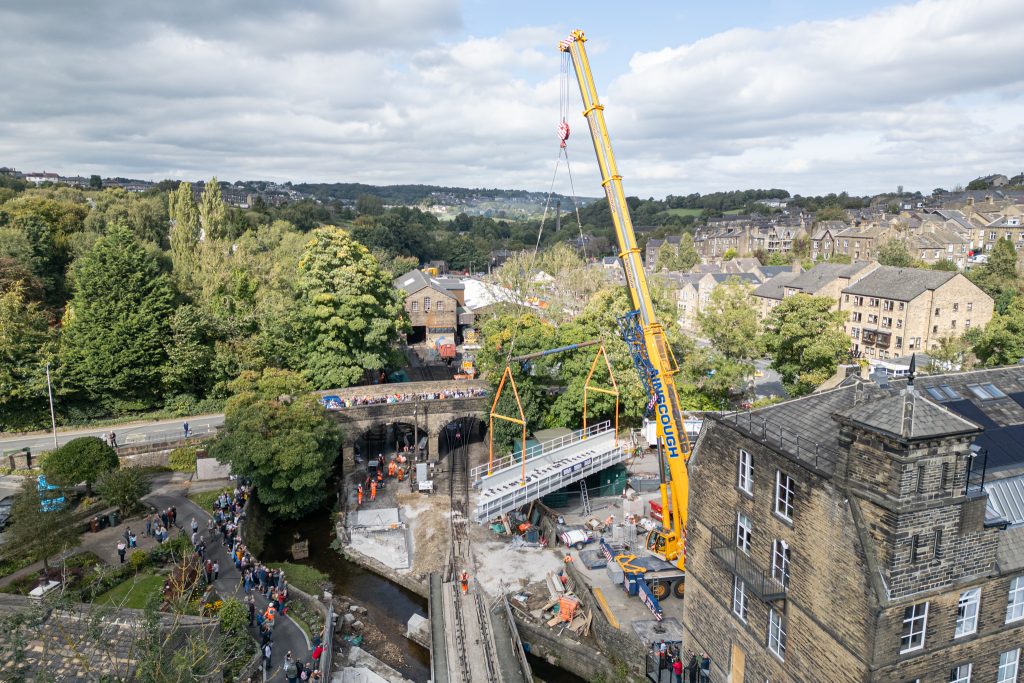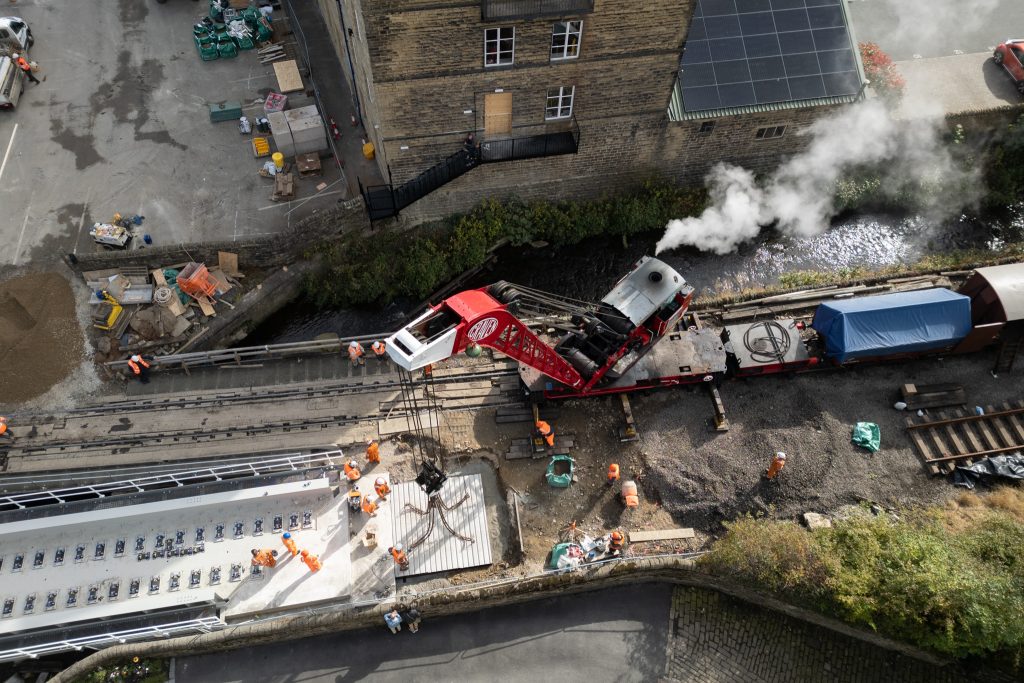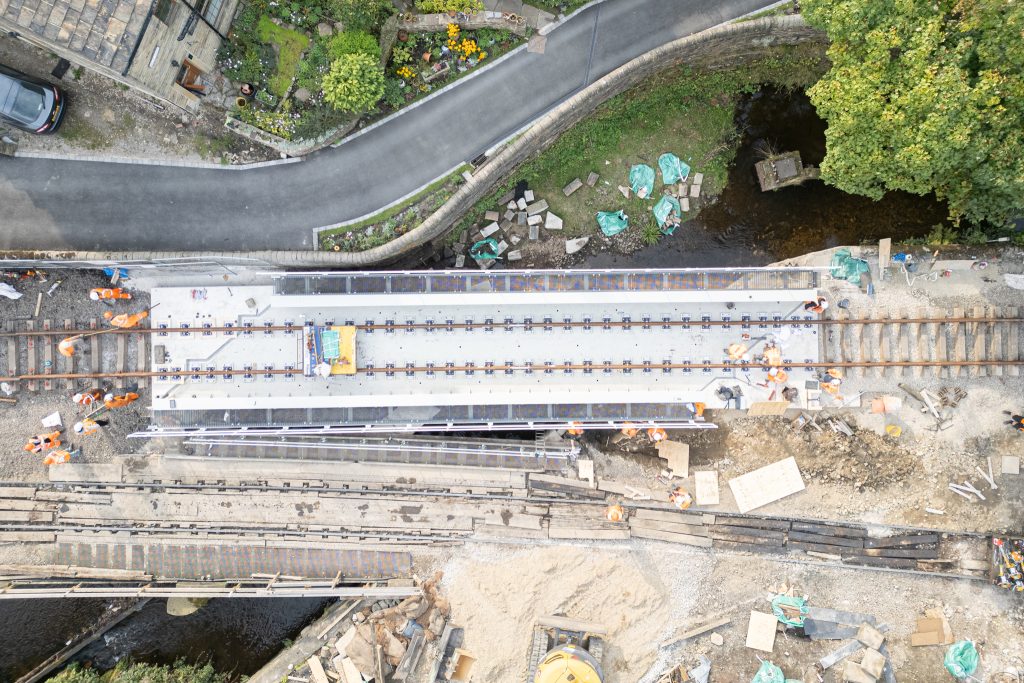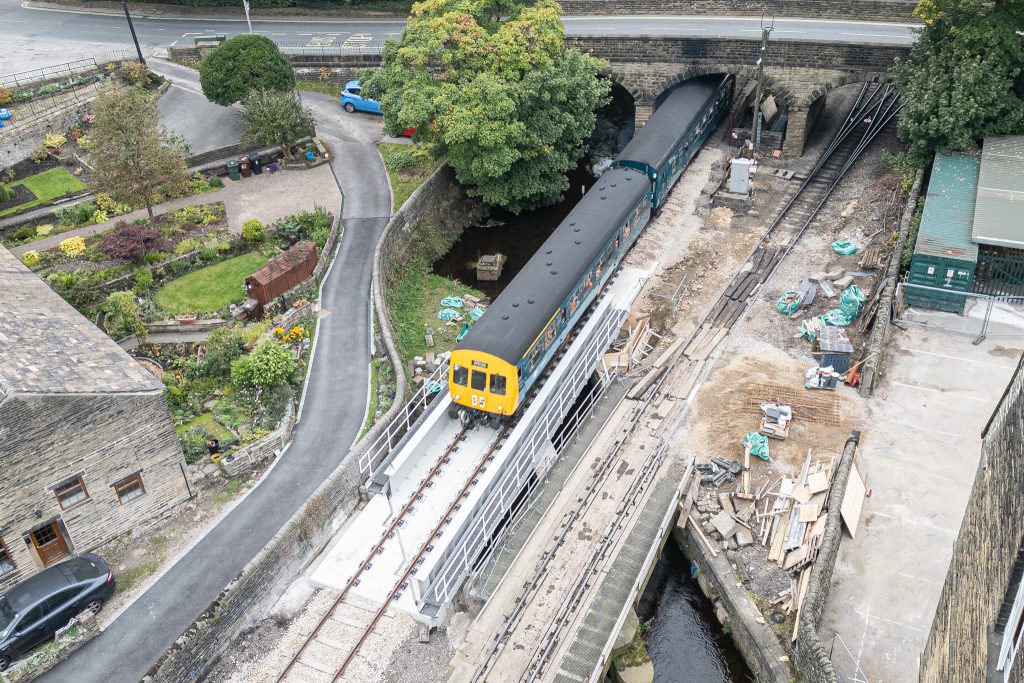The Keighley & Worth Valley Railway has just completed its biggest-ever civil engineering project, the £1.25 million renewal of Bridge 27 in Haworth, on time and with over 2500 hours of volunteering!
Over three weeks, volunteers and contractors have put years of planning into practice by removing the old bridge, which was built in 1889 as part of a reconstruction of an earlier bridge erected in 1867 for the opening of the line. This was replaced with a larger steel structure, sitting on piles (deep foundations), which were be installed behind the existing bridge abutments.
The railway’s Chief Civil Engineer, James Barlow, said: ” The last three weeks have been the culmination of over a decade’s work by volunteers preparing for this incredibly complex civil engineering project. To deliver this scale of work with volunteers, supported by industry specialists, is a credit to the KWVR and its voluntary workforce, as well as the designers, contractors and other suppliers who worked alongside us.”
“We have had the replacement of Bridge 27 on our radar for more than 10 years and we’ve been planning its renewal since around 2015. We’ve worked on the new design with our designers Cass Hayward since 2019 and engaged with our main contractor, Beaver Bridges, since July 2023. Additionally, during the last two years we’ve been working with the Environment Agency to ensure that our project would not adversely impact the river. Their support in delivering this project has been fantastic.”
PILES INSTALLATION
In May, for two weeks, Contractors Keller installed twelve reinforced concrete piles behind the existing structure. The rail was replaced at weekends so services could run. The piles had to be 16 meters deep, fitted with steel cages, and filled with concrete. Once that task was completed, volunteers restored the rails to enable the summer services to run and the engineers to complete the work in September.
DEMOLITION
Fast-forward to Sunday, September 1st, and within seconds of the last train passing over the bridge, volunteers removed the track and old bridge to allow contractors to re-start work on Monday, September 2nd. The Bahamas Locomotive Society’s 50-ton steam crane aided volunteers in demolishing the old bridge, in which the railway’s Grafton steam crane removed the track.
THE JOB – preperation
Before the new bridge arrived or was lifted into place, the site had to be prepared. The piles installed in May needed to be uncovered, and new foundations needed to be constructed for the bridge. The surrounding ground had to be prepared, and a concrete pile cap had to be installed at both ends of the bridge.
The new bridge arrived in Haworth on the evening of September 9th. The deck, weighing nearly 50 tonnes, was so big it needed a police escort into the car park at Wydean Weaving. While waiting for the ‘lift day’, contractor Beaver Bridges put the finishing touches on the bridge deck.
THE JOB – lift day
On Saturday, September 14th, all the years of planning and the biggest part of the job arrived in Haworth; the 450-ton Crane from Ainsclough Crane rolled down Mill Hey with a flurry of police activity and spectators. A few minutes later, after some skilful driving, the crane was in position in the Wydean Carpark alongside the bridge and overlooking the railway, ready to lift in the new bridge and the north-end transition slab
James outlined the complexities of putting the crane in position for the bridge lift. He said:
“Even before we committed to any other supplies or started the detailed design, I contacted Ainscough Crane Hire to discuss the project. We knew that if we could not get this crane to the site, the project could not go ahead in its current form. Ainscoughs worked with Bradford Council during 18-months to put both it and its supporting wagons safely on to the site for the lift.
Amazingly, after all the planning, the crane completed the job in around 45 minutes with no problems at all.
“The day had a fantastic community feel to it with hundreds of local residents watching from the adjoining Bridgehouse Lane overbridge and we’d like to thank all our neighbours and the Worth Valley communities for their continuing support during this project, in spite of all the disruption. “
THE JOB – CIVIL WEEK
The week after the bridge life was the annual Civil Week, during which volunteers spent the week at the railway and worked on a large-scale project; this year was no different, with the largest-scale project to date. The week included finishing the bridge works, installing the south-end transition slab, and then re-installing the track in the area and putting a new track over the bridge.
THE first train
Before the passenger services of the first day, a unique charter went over the bridge. Our DMU Class 101 took a short trip across Bridge 27, full of volunteers who had worked on the project, followed by a photo opportunity with the new headboard & 37075 on the bridge, and finally the 75078 BR Standard 4 crossed the bridge with Chief Civil Engineer James Barlow looking on.
Funding
The project was made possible because the KWVR was awarded £1 million from the Government’s Community Ownership Fund, part of the “Levelling Up” programme.
This project is funded by the UK government through the UK Shared Prosperity Fund.
KWVRPS Chairman Matthew Stroh said:
“ This is a spectacular achievement, with the new bridge being installed and commissioned both on time and on budget. It’s the most ambitious civil engineering project we’ve ever had to undertake since we reopened the line in 1968. It is testimony to the skill and commitment of the many volunteers who made this happen, and in particular to our Chief Civil Engineer James Barlow who led the project. There’s been a decade of planning that has resulted in such an excellent result, and the new bridge helps us secure the future of the railway for generations to come. We are very grateful to the Government’s Community Ownership Fund for a very significant contribution to the cost, and also the Friends of the KWVR for their grant.”
